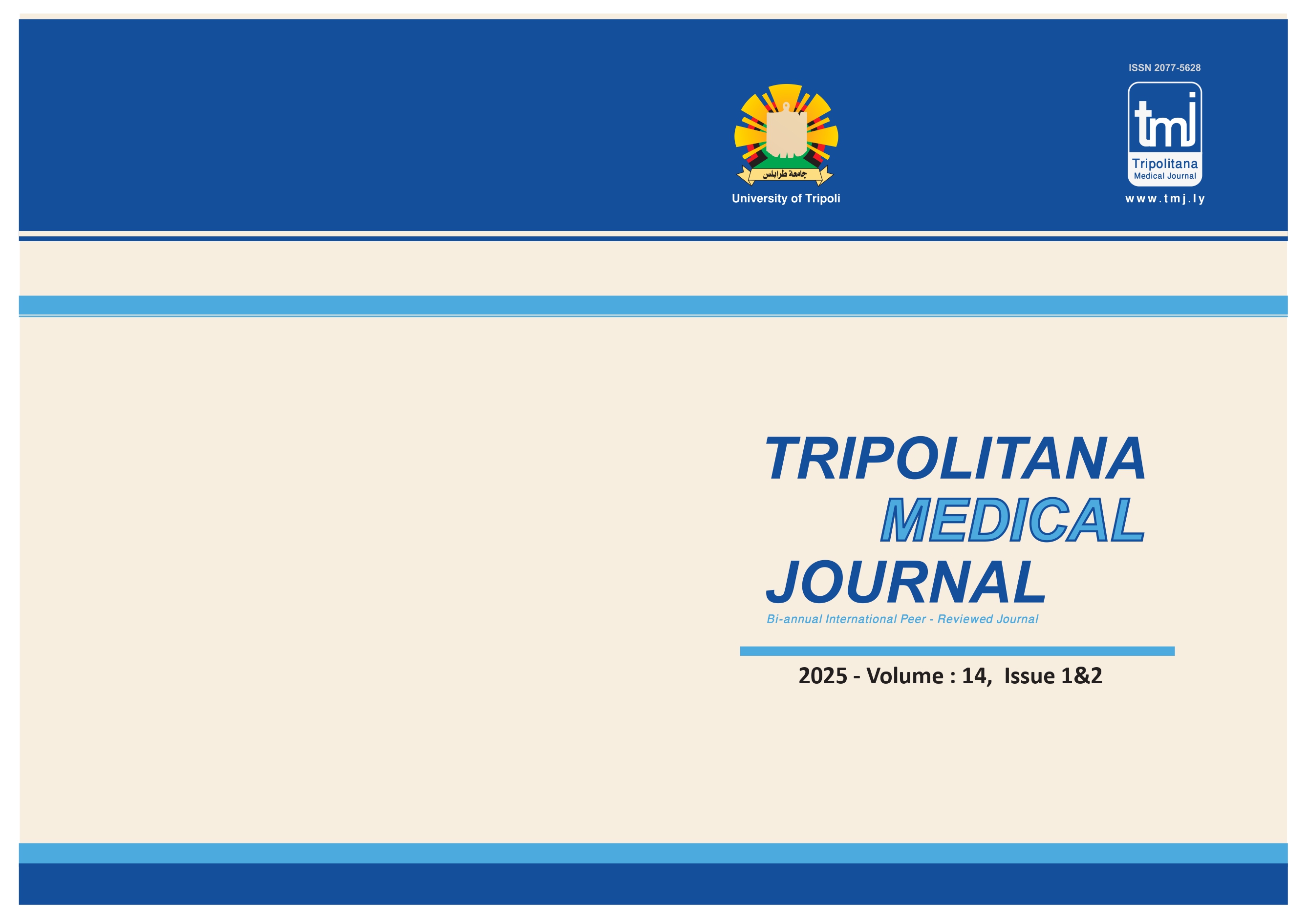Prophylactic Bilateral Internal Iliac Artery Ligation in Placenta Praevia Increta and Percreta Could Prevent Hysterectomies and Massive Blood Transfusion
الكلمات المفتاحية:
Internal iliac artery; Postpartum haemorrhage; Hysterectomy; Morbidly adherent placenta.الملخص
Worldwide, caesarean section delivery is considerably increased; this resulted in increase in cases of pathological placental
adhesion which in turn has increased burden on obstetric units. Internal iliac artery ligation (IIAL) has been recommended as an
efficient means of managing intractable PPH and preventing maternal death. To evaluate the efficacy of prophylactic bilateral
hypogastric arteries ligation on maternal outcome in diagnosed cases of morbidly adherent placenta.
This retrospective study was carried out in a high risk pregnancy unit, Alryan private clinic and Gharian teaching hospital, Libya,
from April 2018 To Jan 2019.
A total of 65 patients diagnosed by color Doppler with an abnormally adherent placenta praevia were studied; 52 (52/65 = 80.3%)
of these patients presented with antepartum hemorrhage and 13 were diagnosed accidentally during routine ultrasound scanning
(Table 1). Sixty-two (95%) patients had undergone previous single or multiple CS. There was a history of previous placenta
praevia in two patients. Pregnancy was terminated in six patients because of antepartum hemorrhage before 36 weeks, whereas
59 patients (90.7%) completed their pregnancy beyond 36 weeks. Bilateral internal iliac artery ligation was performed in all
patients with morbid invasive placenta (59/65 = 90.7%), whereas uterine artery ligation was performed in five patients (6/65 =
9.23%) in who placenta praevia was not pathologically adherent. Satisfactory hemostasis was achieved in 54 patients (54/65 =
83%), whereas additional uterine compression suture was performed in one patient (1/22 = 4.5%). Hysterectomy was performed
in five patients with placenta praevia increta (6/22 = 27.2%) complicated by intraoperative uncontrollable hemorrhage (Table 2).
The mean intraoperative blood loss was 1255 ± 589 mm3. Blood transfusion was recorded in 49 patients (49/65 = 75%) during
the operation and in two patients (3/65 = 4.6%) on the first day after the operation. 9.8 + 1.3 and 31.4 + 2.3 are the results of
mean haemoglobin and hematocrit respectively one day postoperatively.
Abnormal placentation such as placenta accreta or increta is a potentially life-threatening hemorrhagic condition that carries a
high rate of maternal morbidity and mortality. Prophylactic bilateral internal iliac artery ligations before extraction of placenta
accrete seemed to be an effective and safe technique to decrease intrapartum and postpartum complications, and to avoid
emergent peripartum hysterectomy




